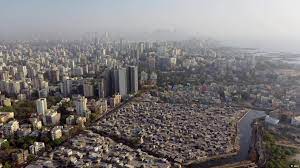
Urban Urbanization Connections
Urban poverty is a situation where the citizens residing in urban areas face economic as well as social difficulties. This situation is mainly prevalent in industrial cities where citizens are deprived of basic facilities like clean drinking water, clothes, sanitation facilities, healthcare facilities, and so on. Around 6.5 crore of the total population lives in slums.
This indicates how prevalent and intense is the situation of urban poverty in India. First, we will look into the causes that lead to urban poverty to understand the problem from the grass root level. Then, we will look at the adverse impact of urban poverty on the citizens of India. Lastly, we will look into the measures that can be adopted to eliminate or at least, reduce the situation of urban poverty in India.
CAUSES OF URBAN POVERTY INDIA
One of the major causes of urban poverty in India is large-scale migration from rural to urban areas. If we take the example of Rajasthan, the Thar desert region, having a population density of 83 persons per square kilometre is home to a large rural population.
Now, environmental issues such as desertification, land degradation, and drought render hectares and hectares of agricultural land unfit for cultivation, lowering the quality of fodder required for feeding cattle. Hence, the major sources of livelihood that is, agriculture and animal husbandry are adversely affected which compels the rural population to migrate to the urban regions in search of better employment opportunities. Such a kind of migration happens across all of India.
Apart from that, rapid industrialization and urbanization have also led to the blossoming of many slums in urban areas thereby adding to the problem of urban poverty. Lack of education and skills needed to get jobs often is a barrier to employment opportunities in cities. The housing in cities is not affordable for such people living below the poverty line and such citizens have no choice but to live in the pathetic living conditions in the slums.
EFFECT OF URBAN POVERTY
Urban poverty incomprehensibly affects the victims, and women especially have to succumb to the evils urban poverty brings with it. There is a lack of access to basic healthcare facilities due to which women do not have the proper medical facilities needed during childbirth itself, and hence, having such facilities during breastfeeding or postpartum is completely out of the question. Thus, the mortality rate as well as the neo-natal mortality rate increases magnanimously.
As mentioned above, the lack of affordable housing facilities compels the citizens to reside in slum areas where the living conditions are abysmal. These slum areas do not have access to clean drinking water, do not have proper sanitation facilities, and there are areas of open defecation and dumping of waste. This becomes a breeding area for mosquitoes and other pests. Hence, the people living here are often victims of vector-borne diseases. The lack of basic healthcare facilities again worsens the situation.
The women, particularly the young girls residing in this area do not have knowledge about menstrual hygiene or access to proper menstrual products or proper sanitation facilities for that matter. This further leads to period poverty, increasing the chances of diseases caused due to lack of menstrual hygiene.
MEASURES THAT SHOULD BE TAKEN TO ELIMINATE OR AT LEAST REDUCE PERIOD POVERTY
Although the crisis of period poverty is huge standing in today’s day and age, it is not impossible to take measures to reduce urban poverty if not eliminate it. Effective policy measures by the government and collaboration with Non-Governmental Organizations (‘NGOs’) can be instrumental in bringing this change. Firstly, measures regarding the following areas must be taken.
- Improving healthcare facilities
The first step towards this change would be to locate the areas where maximum slums are present and build hospitals so that the citizens there can access basic healthcare facilities at minimal to no cost. Proper medical care should be given to pregnant women not only during childbirth but also during breastfeeding and postpartum which will eventually contribute to the reduction of the mortality rate and the neonatal mortality rate. Apart from that, young girls in these slum areas should be educated about menstrual hygiene. Menstrual products should be given to them at an affordable cost or at no cost at all.
- Improving Education and Generating Employment Opportunities
More and more primary schools are to be set up and the infrastructure in colleges should be built in a manner to facilitate the accommodation of a greater number of students. Apart from that, both pre-and post-matriculation scholarships should be awarded monthly to a certain number of students, particularly to those belonging to minority groups on the basis of their academic performance.
Training centers should be set up to provide vocational training to the beneficiaries and also help them gain skills needed for conducting employment-generating activities. Apart from that, the government should also offer collateral-free loans to both individuals and enterprises to facilitate self-employment.
- Improving the standard of living
As the unavailability of housing facilities is one of the leading causes of urban poverty, it is important to provide pucca houses with a carpet area of 25 square kilometers with two rooms, one bathroom, and one kitchen. Basic civic facilities like clean drinking water, electricity, and sanitation facilities should be provided to maintain a decent standard of living. Apart from this, the potholes in the roads should be filled with mud and the gutters should be cleared to facilitate the free flow of rainwater and prevent the accumulation of stagnant water to hinder mosquito breeding.
CONCLUSION
At first, we understood that one of the root causes of urban poverty is rural-to-urban migration due to environmental hazards like desertification, land degradation, and drought. Hence, the policy measures suggested above are definitely effective in eradicating urban poverty but to eliminate it from the grass root level, it is compulsory to look into these environmental concerns apart from the policy measures suggested above.
By: Somdatta Ghosh
Write and Win: Participate in Creative writing Contest & International Essay Contest and win fabulous prizes.


